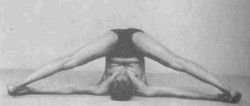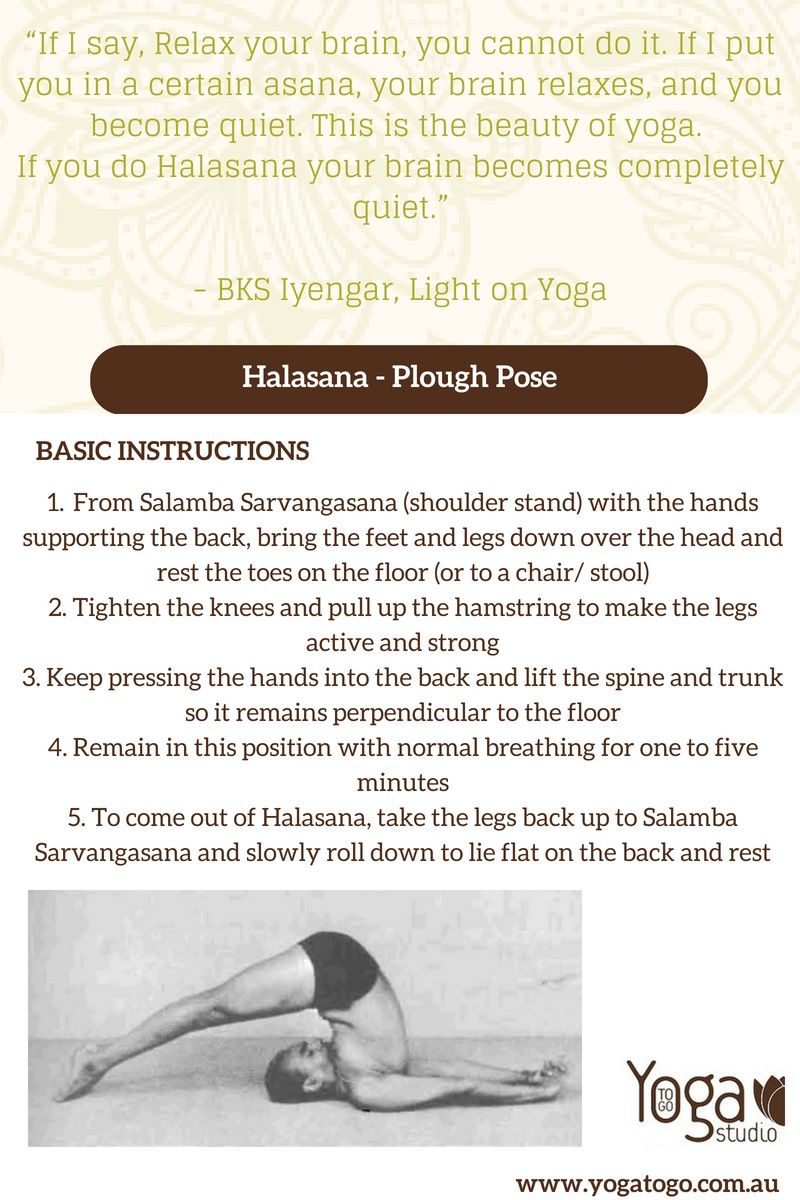Hala – plough, Asana – pose
 Remember when you would lay on the floor and be able to kick your legs over your head as a kid? Well it turns out that not only was it fun, but it was good for you too…
Remember when you would lay on the floor and be able to kick your legs over your head as a kid? Well it turns out that not only was it fun, but it was good for you too…
Normally practiced before and after Salamba Sarvangasana (shoulder stand), Halasana or plough pose is a strong intermediate-level inversion, where the spine is kept tall and strong towards the ceiling, while the legs lower overhead to create a plough-like shape.
The general effects and benefits of this pose are similar to that of shoulder stand, in that both poses bring about a cool, calm and quiet quality to the brain and body, and allows blood and oxygen to circulate around the heart, chest and throat.
BKS Iyengar explains in his book Light on Life that it is difficult to relax the brain and become quiet, but certain yoga poses like Halasana allow this to become possible.
He says “If I say, relax your brain, you cannot do it. If I put you in a certain asana, your brain relaxes, and you become quiet. This is the beauty of yoga. If you do Halasana your brain becomes completely quiet.”
· Stretches: shoulders, spine and hamstrings
· Stimulates: the abdominal organs and thyroid gland
· Relieves: backaches, headaches, insomnia, stress and fatigue
In addition, the (upside down) forward bend action in Halasana helps relieve backaches and cramps. It’s also a good alternative or preparatory pose for Salamba Sarvangasana, if you suffer from high blood pressure – particularly if you take the feet or thighs on to a stool or chair, instead of all the way down to the floor.
This supported version allows us to remain in the pose comfortably and reap the benefits of this rejuvenating pose. Women who are menstruating should not perform any inversions; this supported variation of Halasana is suitable for pregnant women (who already have a yoga and Sarvangasana practice) and helps create space around the pelvic area.
It’s best to avoid Halasana if you have a neck injury and remember to always seek the guidance and supervision of a qualified Iyengar yoga teacher before performing any asana for the first time!


Once you are comfortable and strong in Halasana and Salamba Sarvangasana, there are a number of variations (examples pictured above) that can be done including Supta Konasana (walking the feet out wide) and Karnipadasana (bending the knees down beside the ears), to bring about further nourishing benefits for the body and mind...
Download our infographic below for some simple instructions and don’t forget to send us your Halasana questions, tips and photos. Email info@yogatogo.com.au or message and tag us on Facebook, Instagram or Twitter.



